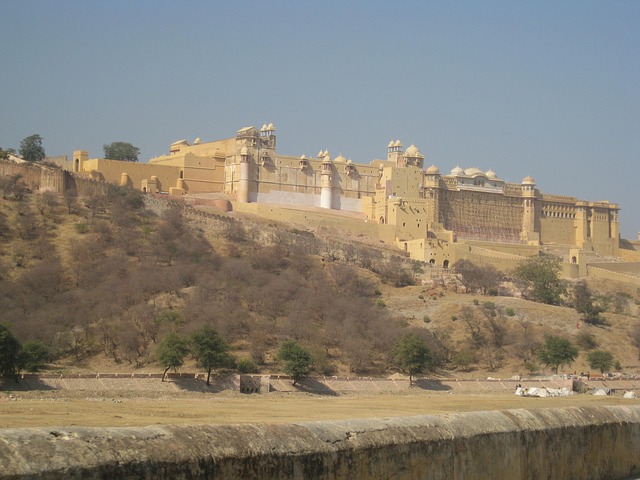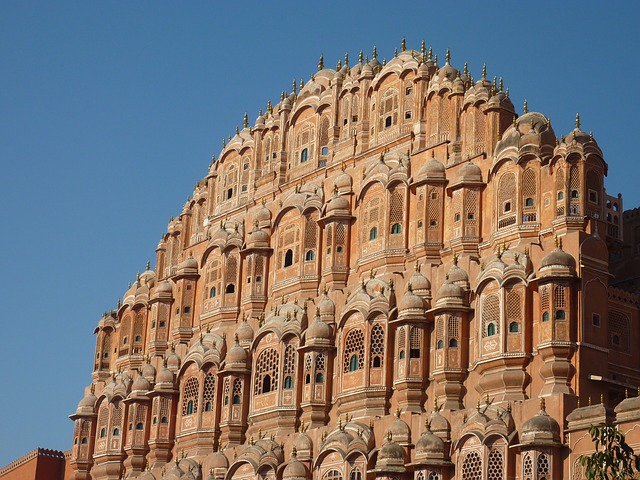 image courtesy: pixabay.com
image courtesy: pixabay.com
Kachawa Chronology:
- 1699 to 1743 – Sawai Jai Singh II
- 1743 to 1755 – Sawai Ishwari Singh
- 1750 to 1768 – Sawai Madho Singh I
- 1768 to 1778 – Sawai Prithvi Singh I
- 1778 to 1803 – Sawai Pratap Singh
- 1803 to 1818 – Sawai Jagat Singh II
- 1818 to 1819 – Mohan Singh (Regent)
- 1819 to 1835 – Sawai Jai Singh III
- 1835 to 1880 – Sawai Ram Singh II
- 1880 to 1922 – Sawai Madho Singh
- 1922 to 1947 – Sawai Man Singh II
Jaipur the present capital of Rajasthan, breath taking with its captivating and artful aesthetics and architecture, is the first ever planned city of India. It was founded under and named after the Kachawa dynasty king, Maharaja Sawai Jai Singh II in 1727.
Jai Singh II succeeded the throne of Jaipur State (Dhundhar) and ruled from his capital, initially situated in Amber. But later as the population of Amber grew larger and the availability of water became scarce, Jai Singh II wished to re-establish his capital in Jaipur.
The scientifically inclined Kachawa king, appointed great scholars from different parts of India, to assist him in designing a unique and scientifically advanced city. One of the most prominent scholars, Vidyadhar Bhattacharya, a Brahmin pundit from Bengal, approached the king with his profound knowledge of Mathematics and Astronomy and its higher schools of Euclid and Ptolemy. His research formed the basis of the city of Jaipur.
Jaipur was intricately designed and constructed over a period of four years (1727-1731). It formed a rare example of an organised city, with its extraordinarily scientific marvels.
The city comprised of nine sections. While the primary two sections accommodated the magnificent palaces and state buildings, the rest of the seven sections were for public accommodation. The city was designed bearing in mind the various aspects of Vastu Sastra.
 image courtesy: pixabay.com
image courtesy: pixabay.com
The Palace complex was surrounded by six quarters distinctly divided by wide roads. Further the city was woven by a mesh of connecting streets which divided the city into blocks and sections. Advanced techniques and cooling methods were implement, to keep the various grand constructions enclosed in the centrally located Palace complex, well ventilated and cool. Within the Palace complex is the Hawa Mahal, beautiful gardens and a shallow lake. The Maharaja himself resided in the Naharghar Fort situated on the hill top, on the north-eastern part of Jaipur. As Jai Singh II was greatly influenced by scientific ideas, the astrological observatory, Jantar Mantar was constructed.
High walls and forts were erected encircling the city and strong gates were built ensuring high levels of security and safety to the city. Also, the enormous Jaivana was built under Jai Singh II.
Through the down fall of the Mughal Empire, towards the later part of the eighteenth century, Jaipur witnessed many a wars and fights for conquest, in which enough wealth was squandered.
However, the city saw huge developments and technological advancements under the successive rulers- Sawai Ram Singh II, Sawai Madho Singh, Sawai Man Singh II during nineteenth century. Roads and infrastructures were improved, pavements and boulevards were built and lined with gas lights. Under Sawai Ram Singh II (1835-1880) education and medical facilities were also enhanced.
Under the British Government, Jaipur formed the capital of the princely State of Jaipur. However, after Indian independence in 1947, the city of Jaipur emerged as the largest city in India and the capital of Rajasthan.
The city built out of pink sand stones give away an iridescent pink glow in the morning sun, still shining in the glory of its past relics. Synonymous as the Pink City, Jaipur, dotted with numerous mathematical and scientific wonders and its hypnotic charm revel in splendours.
Around the year, millions of tourists from across the globe, come to Jaipur to witness its many beauties. Many a visitors choose to reside in the few royal forts. These are now converted into luxurious heritage hotels, to fulfill the hearts desires of visitors who wish to experience the grandeur of the royal Maharajas.
![]()




